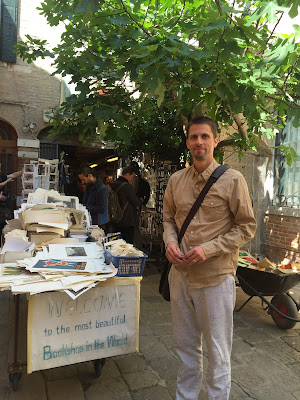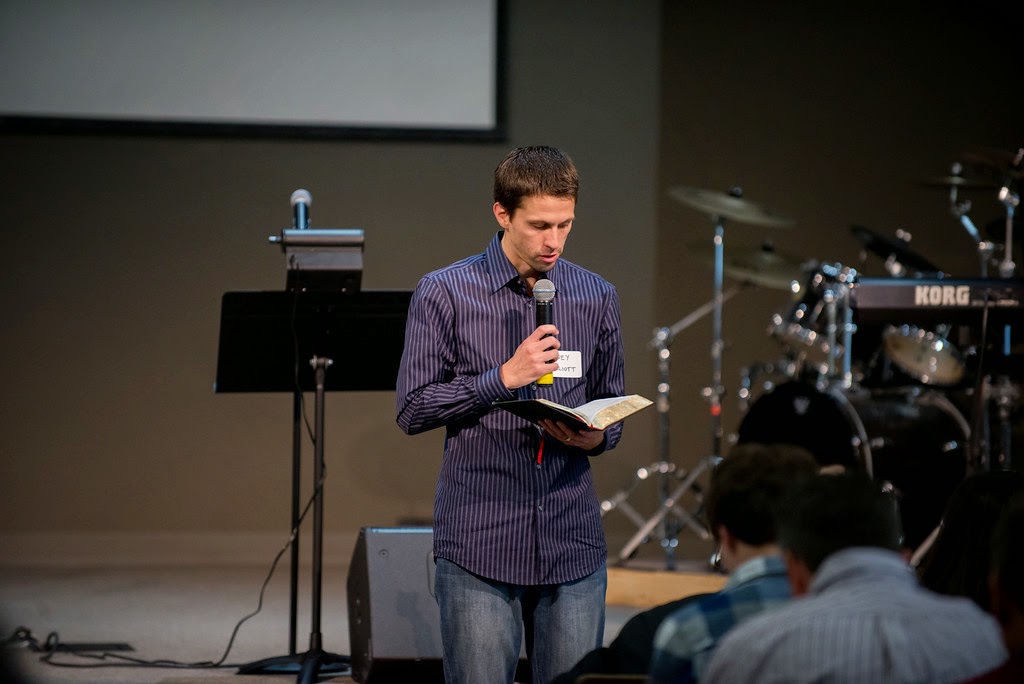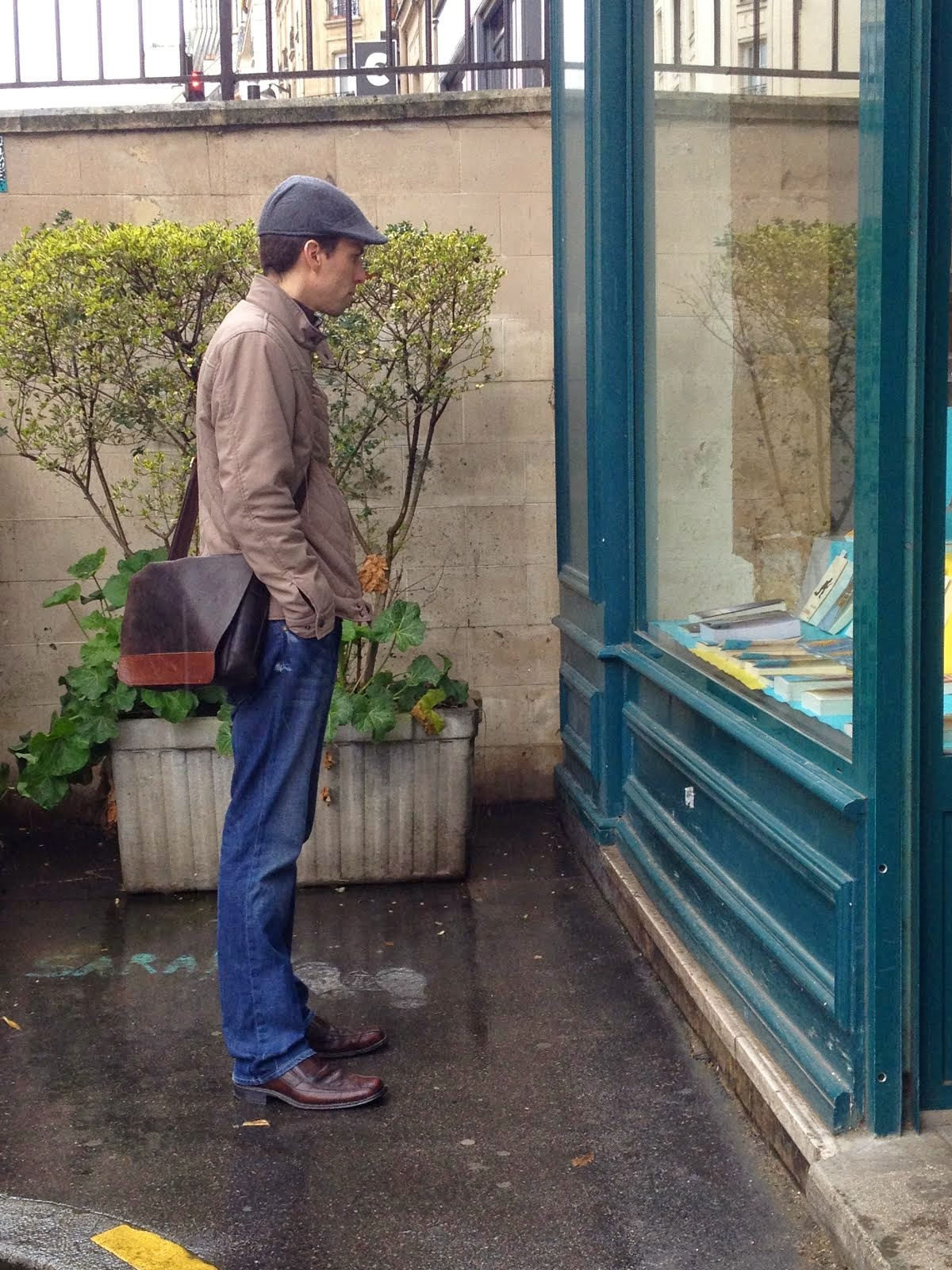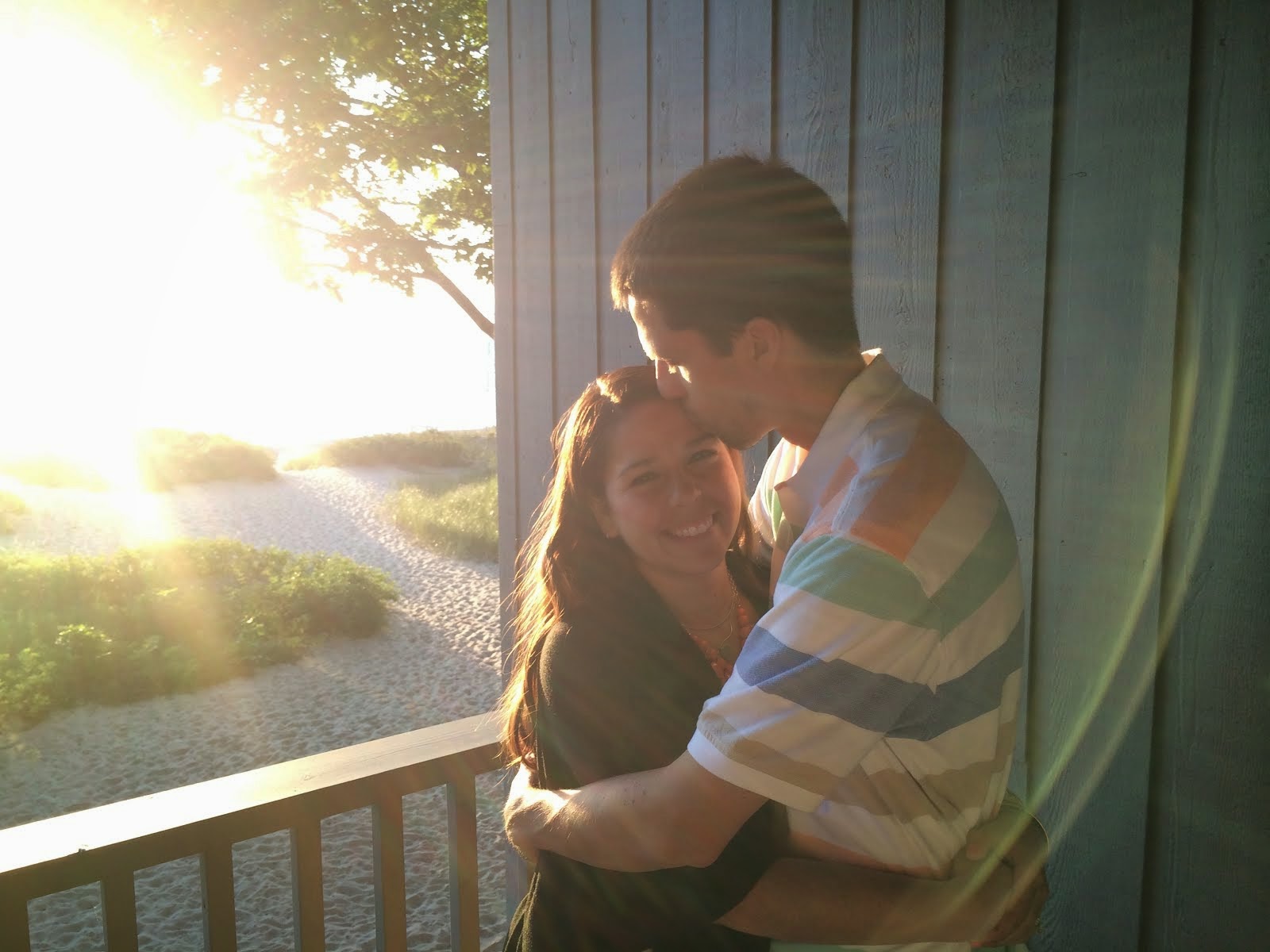Now, I am going to describe Venice to you.
It is like... Well... You see there are.... I mean, as you walk around you... There are no cars so... It is shaped like a fish and... The chances of getting lost are high because... Have you ever had a dream that seemed so real but... Gondola... Glass... Seafood...
You know what? Scratch that. Too difficult. Let me back up a bit. A year ago, my wife and I went to an "Antique Treasure Hunt" on the Old Northside of Indianapolis surrounding the Indiana Landmarks Center. Actually, the morning of my writing this was the same event this year. This time we took our little buddy Stanley the Samoyed. He did great and was kind of a big deal. But I digress. Last year, one of the treasures I came away with was a book called Venice: Its History, Art, Industries, and Modern Life, copyright 1896, written by Charles Yriarte. I remember paying more for it than I normally do for rare and used books, and my justification was that someday we would go there and I would be glad I had it. At that time our Italy trip was hardly even an idea in our minds. Now, this old treasure gives me some great words to explain the unexplainable.
For this post I am going to intermingle quotes from this book with pictures, and then at the end tell you in my own words about a few things I think you should know.
"Venice, the Queen of the Adriatic, is distinguished, not only by the glory of her arts, the strangeness of her position, the romance of her origin, but by the great historical memories of her days of power. These throw an interest over a city which survives its own glories, and even its own life, like the scenery in some great theatre after the play is done and all the actors are withdrawn. A pleasurable melancholy grows upon the traveler who wanders among the churches or glides along the canals of Venice."
"Although misfortune has overcast the city with a pall of sadness, it still preserves the indefinable grace of all things Italian. Its old magnificence imposes on the mind, while the charm of its present melancholy creeps about the heart. And even on the brightest day, when the unconquerable sun looks down most broadly on the glittering city of St. Mark, silence and melancholy still hold their court on the canals; and the most unsentimental spirit yields to the elegiac influence."
"At Venice, he who is happy, he for whom silence has no charms and who loves the tumult of the world, soon finds his footsteps dogged by limping dullness. But those who have known the sorrows of life return gladly thither; the place is "catching" - every corner or open square recommends itself to the affections. The lightness of the heavens, the even purity of the air, the steely shine of the lagoon, the roseate reflections of the walls, the nights as clear as day, the softness of the Venetian dialect, the trustfulness and placability of the people, their tolerance for all men's humors, and their gentle intercourse, - out of all these results that unseizable and seductive quality which is indeed Venice, which sings at a man's heart, and so possesses and subdues him that he shall feel far from home whenever he is far from the Piazzetta."
"Travel where you will, neither Rome nor Jerusalem, neither Granada, Toledo, nor the Golden Horn will offer you the spectacle of such another enchanted approach. It is a dream that has taken shape; a vision of fairyland turned into reality by human hands. The order of nature is suspended; the lagoon is the like the heavens, the heavens are like the sea; these rosy islets carrying temples are like barks sailing in the sky; and away upon the horizon, towards Malamocco, the clouds and the green islands lie mingled as baffingly as shapes in the mirage of the desert."
"The very buildings have an air of dreamland; solids hang suspended over voids; and ponderous halls and palaces stand paradoxically supported on the stone lace-work of medieval sculptors. All the principles of art are violated, and out of their violation springs a new art, borrowed from the East but stamped with the mark of Venice; in a while this is transformed and becomes, in the hands of Lombardi, the Leopardi, and the Sansovino, the glory and the adornment of the city."
THE HOTEL
If all that was not enough, you should know about the hotel where we stayed. It is called the Danieli, and because of its connection to Starwood, we were able to get a deal with Katie's mom's points. By a deal I mean we were able to stay for two nights what it would cost to stay an entire week in a normal place. Venice is not a normal place. Naturally, this place used to be a palace.
Upon checking in, we were told that we have "the balcony". Not "a balcony". That is say, the only balcony in the hotel, which also is on the corner. God is so abundantly gracious to us when we travel.
THE BOOKSHOP
You should also know that Venice is home of the world's most beautiful bookshop. I like bookshops.
This one had books piled in gondolas:
Book steps (that is, steps made from books) to give you a view of the canal:
Its own dock for entry via gondola:
And a small outdoor reading room:
It was grossly disorganized and wonderful. Found me a used Bible in Italian.
THE LEGEND
You should also know that in Venice, inside the famous St. Mark's Cathedral, are the bones of Mark himself, the author of the second book of the New Testament. Or so the legend goes. If I could, I'd like to take a minute to highlight something I came to realize after returning. There were many early Christians who went to great lengths to either recover relics related to the original apostles, or pretend that they did and then allow history to be built around them. Perhaps more so in Rome, at places were we did not visit (but would have had I known!), there are these examples; such as the chains that bound St. Peter or (my personal favorite) the index finger of St. Thomas that touched the post-resurrection wounds of Jesus. Whether these types of relics are truly what they say they are is suspect. In Venice's case, St. Mark was claimed as their much-needed patron saint once his bones were successfully recovered (stolen) from Alexandria. Now, those remains are said to reside directly beneath the altar of St. Mark's Basilica.
Historically, it is actually unlikely that the bones of the author of the second book of the New Testament are in Venice, because it is unlikely that the bones that were stolen were his in the first place. It is possible that no one knows or can know what the real truth is. Theories abound; even those as random as that the remains under the altar really belong to Alexander the Great (just ask the internet). It is all very fascinating. One thing is for sure - the physical remains of those who personally knew and saw the incarnate Christ are far less important than the work they did and words they preserved for us.
THE SEAFOOD
And finally, you should know that when in Venice you eat seafood. Really, really good, fresh, and unique seafood.
Venetians like to eat several small samplings of meals, especially in the evening. They call this "cicheti", which is basically tapas, or small plates. Don't overthink it - order what they tell you to. Our meals in Venice blur together a little because we did so much of this. We had more than three meals a day I think.
Still, we had some incredible meals the normal way. Calamari Gnocchi, Grilled Swordfish, Sea Bass Cerviche, Seafood Lasagna. Oh my!
THE CITY
Sadly, that brings this Italy recap to an end. I hope you have enjoyed reading it as much as I have writing it. As I close, I'll offer a thought for your consideration. While in Italy, our church was in the middle of a sermon series on Heaven. My wife and I talk and dream about heaven together often, specifically the New Heavens and the New Earth. I couldn't help but wonder, when I consider the fact that history will end in a city, what kind of city that will be. Perhaps Rome, with its breadth, depth, and splendor? Or maybe Florence, an all around wonderful and beautiful place to be? You know, I think it might be more like Venice; its pleasurable melancholy and simplistic yet robust culture. A dream turned into a reality. I wonder.








































































